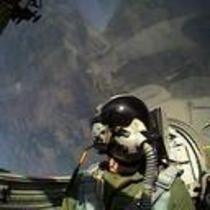A light scout and a mid-size transport remain Army aviation’s top two priorities, Secretary Mark Esper said, but industry needs to start thinking about the next heavy-lift aircraft and stop fighting against cuts to the venerable CH-47.
“I’m asking industry is to think about heavy future vertical lift,” Army Secretary Mark Esper told reporters today. “Where I need their heads to be is thinking about future heavy vertical lift, not about how do we maintain what we have now and make upgrades here or there.”
Translation: Boeing and Pennsylvania legislators, stop fighting me to restore funding for the latest upgrade to the venerable CH-47 Chinook — built outside Philadelphia — and join me in brainstorming a radically better aircraft for future great-power wars with Russia or China.
“I really want to think aggressively, boldly about what the future may hold, how it can be different,” Esper said.
Is that just your advice to industry, I asked, or is there some kind of preliminary study planned that companies could actually get government money for?
It’s premature to talk dollars, Esper replied. “Whether we help fund that at some point, I don’t know, I’m not going to talk about that right now,” he said. “My comment was only we need aircraft in the future that can do that heavy vertical lift movement, but can … survive in a very contested airspace and keep up with the FARAs and FLRAAs.”
That’s the Future Attack Reconnaissance Aircraft — a light scout to fill the gap left by the retired OH-58 Kiowa — and the Future Long-Range Assault Aircraft — a mid-size transport to replace the UH-60 Black Hawk. Both are intended to be high-speed, long-range aircraft. FARA is the Army’s top-priority aircraft program, Esper reiterated here at the Brookings Institution today, and FLRAA is No. 2.
But once the light scout and the mid-size transport programs are further along, Esper said for the first time today, his no. 3 priority will be a new heavy hauler. “We’re not there yet, right, obviously we need to get FARA and FLRAA moving,” Esper said.
“No. 3 is I need to eventually think about what’s the future of heavy vertical lift,” Esper told the audience at Brookings. “What’s the future replacement for the Chinook” with the greater speed, range, payload, and survivability required for future battlefields?
Why isn’t the biggest aircraft the biggest priority? The CH-47F Block II upgrade would increase that payload to accommodate the new and much better-armored Joint Light Tactical Vehicle (JLTV). But the Army’s 2020 budget plan cancels the CH-47F Block II and slows down JLTV to focus on the Big Six capabilities deemed most essential future high-intensity warfare: long-range artillery, armored vehicles, high-speed Future Vertical Lift aircraft, secure networks, air & missile defense, and soldier gear — in that order of priority.
The unique paradox of the CH-47 is that the design is one of the Army’s oldest — the first Chinooks entered service in 1962 — but the individual aircraft are some of the Army’s youngest — with the fleet upgraded and rebuilt to the CH-47F Block I standard. By contrast, the Army has no thoroughbred scout aircraft in service since it retired Kiowa, and the stopgap replacement of much heavier AH-64 Apache gunships working with drones has proved unsatisfactory.
“I want the rotorcraft industry…to start thinking about what is the future of heavy vertical lift,” Esper said. “
“I need an aircraft that can survive… that has greater range, greater speed, greater payload,” he said, “because I can’t have FARA and FLRAA zipping down the battlefield and meanwhile our other aircraft can’t keep up.”



 Your new post is loading...
Your new post is loading...














